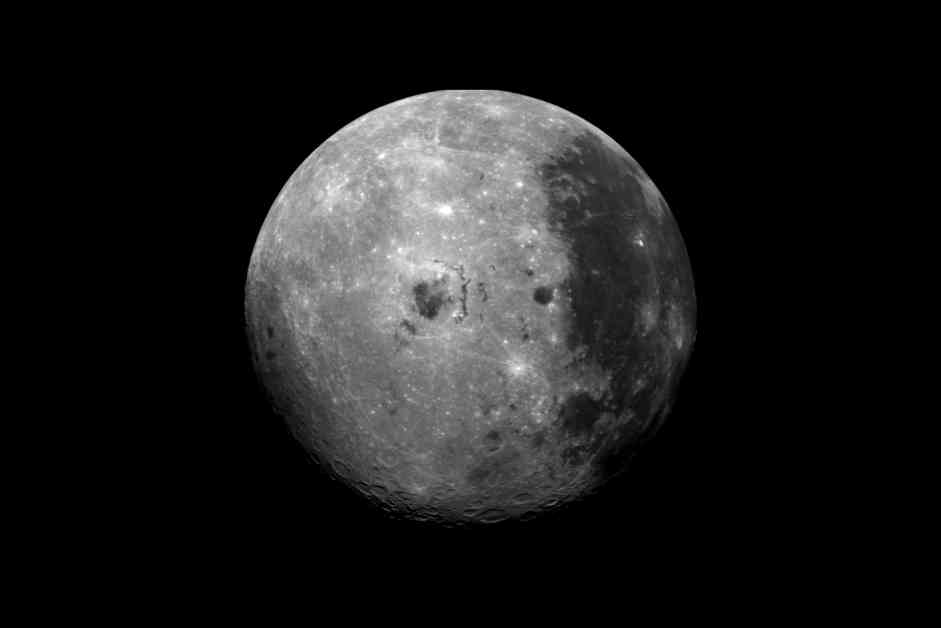Imagine the moon in your mind, with its pockmarked surface created by asteroids and meteorites. Most of us picture the same side of the moon because it rotates and revolves around Earth in a way that we always see the same surface. But what about the hidden side of the moon? Why is it so mysterious and unfamiliar?
The moon is in constant motion, spinning on its axis and orbiting Earth. However, the signs of this movement are subtle. Due to the moon’s tidally locked rotation, we always see the same side from Earth. While the moon appears differently in the sky depending on the day and its position relative to Earth and the Sun, the far side remains hidden from our view.
Often referred to as the “dark side of the moon,” the far side is actually not deprived of sunlight like many believe. In fact, it goes through the same lunar day and night cycles as the near side. Despite its mysterious reputation, the far side of the moon has been observed by spacecraft like the Soviet Luna 3 in the 1950s, which revealed a landscape with fewer mare plains and more craters than the near side.
In recent years, China’s Chang’e 4 and Chang’e 6 missions have landed on the far side of the moon, collecting samples and studying the surface. These missions have provided valuable insights into the moon’s composition and history, shedding light on the differences between the near and far sides. Scientists hope to uncover more about the moon’s origins and evolution by analyzing these samples.
While the far side of the moon remains largely unexplored and inaccessible, recent missions have brought us closer to understanding this mysterious region. With advancements in technology and space exploration, we may soon unravel more secrets hidden on the far side of our celestial neighbor.
The study of the moon’s far side continues to intrigue scientists and space enthusiasts alike, offering a glimpse into the moon’s complex history and geological makeup. As we uncover more about this enigmatic side of the moon, we may gain a deeper understanding of our place in the universe and the origins of Earth’s closest companion.






